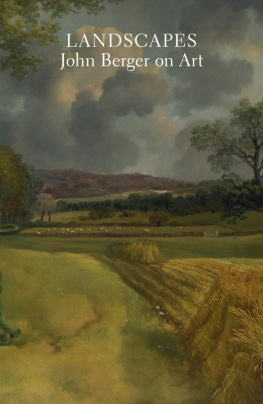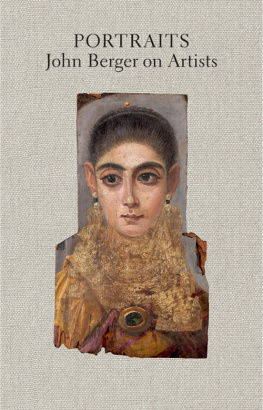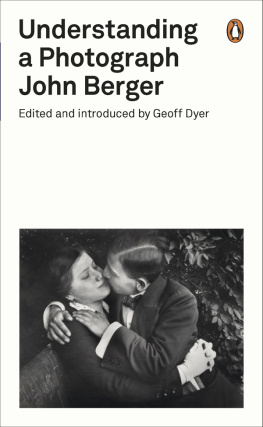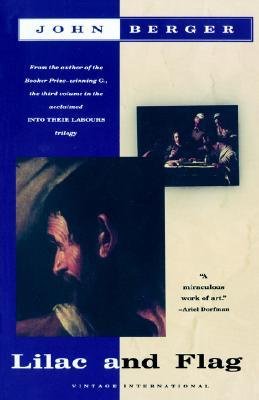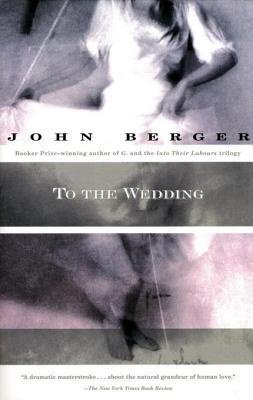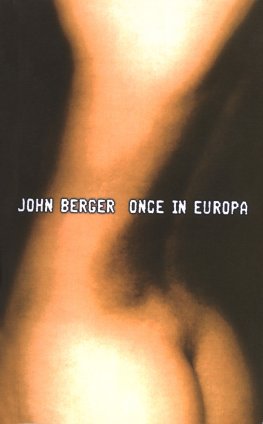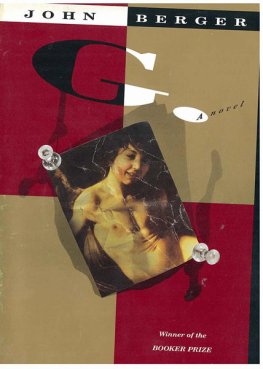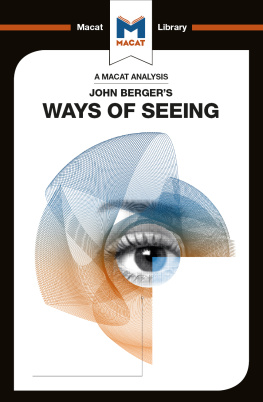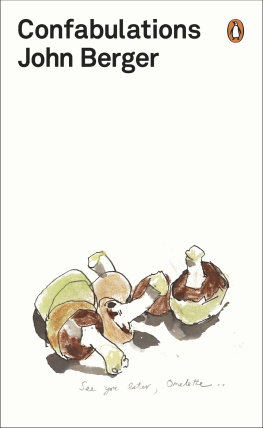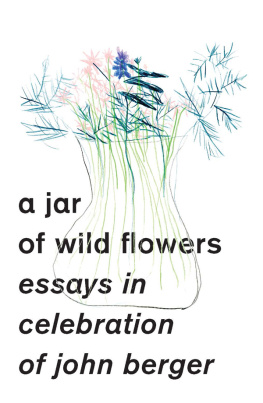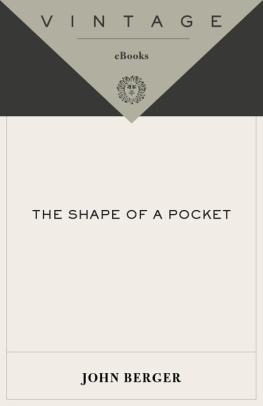John Berger - Landscapes: John Berger on Art
Here you can read online John Berger - Landscapes: John Berger on Art full text of the book (entire story) in english for free. Download pdf and epub, get meaning, cover and reviews about this ebook. year: 2016, publisher: Verso, genre: Art. Description of the work, (preface) as well as reviews are available. Best literature library LitArk.com created for fans of good reading and offers a wide selection of genres:
Romance novel
Science fiction
Adventure
Detective
Science
History
Home and family
Prose
Art
Politics
Computer
Non-fiction
Religion
Business
Children
Humor
Choose a favorite category and find really read worthwhile books. Enjoy immersion in the world of imagination, feel the emotions of the characters or learn something new for yourself, make an fascinating discovery.
- Book:Landscapes: John Berger on Art
- Author:
- Publisher:Verso
- Genre:
- Year:2016
- Rating:4 / 5
- Favourites:Add to favourites
- Your mark:
- 80
- 1
- 2
- 3
- 4
- 5
Landscapes: John Berger on Art: summary, description and annotation
We offer to read an annotation, description, summary or preface (depends on what the author of the book "Landscapes: John Berger on Art" wrote himself). If you haven't found the necessary information about the book — write in the comments, we will try to find it.
Landscapes: John Berger on Art — read online for free the complete book (whole text) full work
Below is the text of the book, divided by pages. System saving the place of the last page read, allows you to conveniently read the book "Landscapes: John Berger on Art" online for free, without having to search again every time where you left off. Put a bookmark, and you can go to the page where you finished reading at any time.
Font size:
Interval:
Bookmark:
Praise for Portraits
John Berger tedaches us how to think, how to feel, how to stare at things until we see what we thought wasnt there. But above all, he teaches us how to love in the face of adversity. He is a master
Arundhati Roy, author of The God of Small Thing s
A volume whose breadth and depth bring it close to a definitive self-portrait of one of Britains most original thinkers
Financial Times
John Berger throws a long shadow across the literary landscape; in that shade so many of us have taken refuge, encouraged by his work that you can be passionately, radically political and also concerned with the precise details of artistic production and everyday life, that the beautiful and the revolutionary belong together, that you can chart your own course and ignore the herd, that you can make words on the page sing and liberate minds that way. Like so many writers, I owe him boundless gratitude and regard news of a new book as encouragement that the most important things are still possible. The gifts are huge, and heres another one coming
Rebecca Solnit, author of Men Explain Things to Me
In this extraordinary new book, John Berger embarks on a process of rediscovery and refiguring of history through the visual narratives given to us by portraiture. Bergers ability for storytelling is both incisive and intriguing. He is one of the greatest writers of our time
Hans Ulrich Obrist, author of Ways of Curating
One of the most influential intellectuals of our time
Sean OHagan, Observer
Berger is a writer one demands to know more about an intriguing and powerful mind and talent
New York Times
Ingenious, jargon-free and direct Berger is a formidable stylist
New York Times
Perhaps the greatest living writer on art reminds us just how insufficient most art commentary is these days an indispensible guide to understanding art from cave painting to todays experimenters
Spectator
Bergers art criticism transcends its genre to become a very rare thing literature
New Republic
In the writings of John Berger we find a passion for art itself, for the created thing, that is everywhere tempered by an awareness of the social and political world, which too many theorists, whatever their special pleadings, simply ignore
Harpers Magazine
Berger long ago attained a position unrivalled among English writers or intellectuals of his generation; he seems to stand for a vanished era of critical and political seriousness All that seems worth preserving and worth celebrating in a long and varied but essential volume
Brian Dillon, Literary Review
LANDSCAPES:
John Berger on Art
by
John Berger
Edited with an Introduction by Tom Overton

First published by Verso 2016
John Berger 2016
Translation, , from Poems on the Theatre by
Bertolt Brecht Anya Bostock and John Berger 2016
Introduction Tom Overton 2016
All rights reserved
The moral rights of the authors have been asserted
1 3 5 7 9 10 8 6 4 2
Verso
UK: 6 Meard Street, London W1F 0EG
US: 20 Jay Street, Suite 1010, Brooklyn, NY 11201
versobooks.com
Verso is the imprint of New Left Books
ISBN-13: 978-1-78478-584-0
ISBN-13: 978-1-78478-587-1 (US EBK)
ISBN-13: 978-1-78478-586-4 (UK EBK)
British Library Cataloguing in Publication Data
A catalogue record for this book is available from the British Library
Library of Congress Cataloging-in-Publication Data
Names: Berger, John, author. | Overton, Tom, editor.
Title: Landscapes : John Bergers writing on art / John Berger ; edited with an introduction by Tom Overton.
Description: Brooklyn : Verso, 2016.
Identifiers: LCCN 2016019158| ISBN 9781784785840 (hardback) | ISBN 9781784785871 (ebook)
Subjects: LCSH: Art.
Classification: LCC N7445.2 .B467 2016 | DDC 700 dc23
LC record available at https://lccn.loc.gov/2016019158
Typeset in Electra by Hewer Text UK Ltd, Edinburgh
Printed and bound by CPI Group (UK) Ltd, Croydon CR0 4YY
WHAT DOES IT mean for a piece of writing to be on or about art? This books companion volume, Portraits , was one answer, assembling the variety of approaches John Berger has taken to individual artists. A timeline structured by dates of birth and death made space for evaluations and re-evaluations of lives and works by the light of different written forms, and changed historical and personal contexts.
Their structure meant excluding texts such as The Moment of Cubism (19668), in which Berger argues that, though there might be individuals we associate with developments in art between 1907 and 1914,
Cubism cannot be explained in terms of the genius of its exponents. And this is emphasised by the fact that most of them became less profound artists when they ceased to be Cubists. Even Braque and Picasso never surpassed the work of their Cubist period: and a great deal of their later work was inferior.This extract is about art in the sense that the author is trying to reveal what circulates and forms it searching for the conditions from which it arises, or the climate into which it was received. Berger came to intellectual maturity in a post-war London subculture of refugees from European fascism, and the pieces of writing in which he looks beyond England and processes the thought of Brecht, Lukcs, Benjamin, Frederick Antal, Max Raphael, Rosa Luxemburg and James Joyce are other omissions from Portraits .
Another aspect of the relationship between The Moment of Cubism and art is that, by documenting a startlingly fertile period of history in which there was no longer any essential discontinuity between the individual and the general, Berger inaugurated such a period in his own work.
The essay appeared in the MarchApril 1967 edition of New Left Review . Later that April, it was followed by an extract in New Society from A Fortunate Man a new book, made with the photographer Jean Mohr, which described the life of a GP in the Forest of Dean through a series of fictionalised case histories. As a work somewhere between biography and portraiture, A Fortunate Man shares an outlook with No More Portraits, the August 1967 New Society essay in which Berger announced: We can no longer accept that the identity of a man can be adequately established by preserving and fixing what he looks like from a single viewpoint in one place.
At the time, Berger was also writing G . (1972), a novel about modernism, published at the moment of postmodernism. The work turned this insight into a motif, repeated throughout the book: Never again will a single story be told as though it were the only one.
Berger repeated entire chunks of text from G . in his most famous book and TV series about art, Ways of Seeing . The title announced a pluralistic approach, and reflected the collaborative way in which it was made (with Mike Dibb, Sven Blomberg, Chris Fox and, in the episode on the male gaze, Eva Figes, Barbara Niven, Anya Bostock, Jane Kenrick and Carola Moon). At the end, part-way between soliciting disagreement and pre-empting it, Berger expressly shows the book and series to be a meeting of makers and audience: I hope you will consider what I arrange, but please, be sceptical of it.
Berger was again trying to live up to what he had identified in The Moment of Cubism: a new scientific view of nature which rejected simple causality and the single permanent all-seeing viewpoint. This struck him as an encouragement to greater self-reflexivity: The Renaissance artist imitated nature. The Mannerist and Classic artist reconstructed examples from nature in order to transcend nature. The Cubist realised that his awareness of nature was part of nature.
Next pageFont size:
Interval:
Bookmark:
Similar books «Landscapes: John Berger on Art»
Look at similar books to Landscapes: John Berger on Art. We have selected literature similar in name and meaning in the hope of providing readers with more options to find new, interesting, not yet read works.
Discussion, reviews of the book Landscapes: John Berger on Art and just readers' own opinions. Leave your comments, write what you think about the work, its meaning or the main characters. Specify what exactly you liked and what you didn't like, and why you think so.

